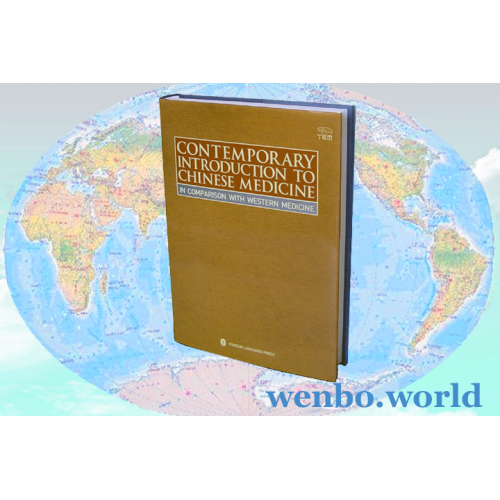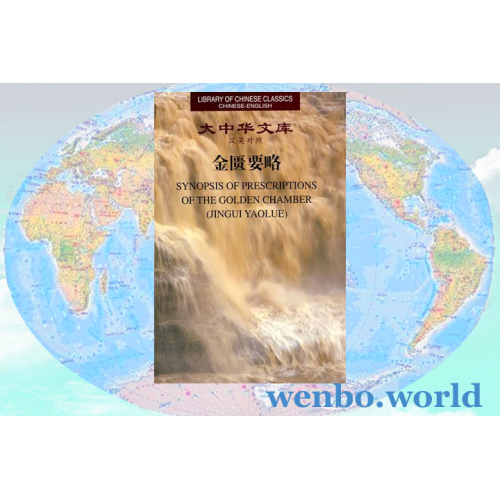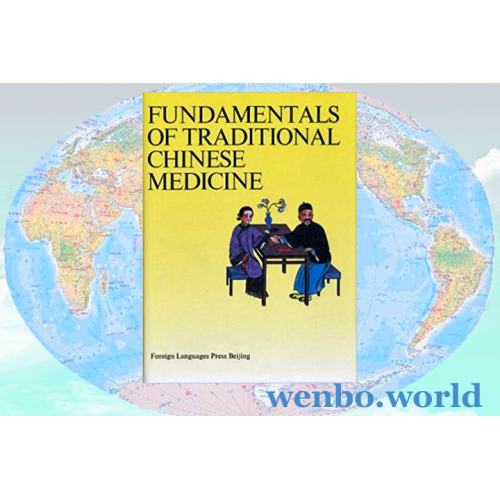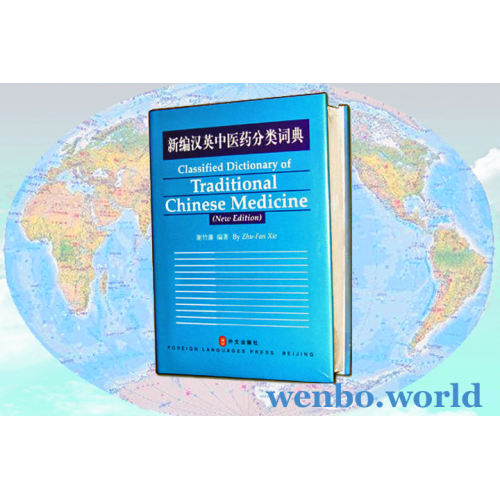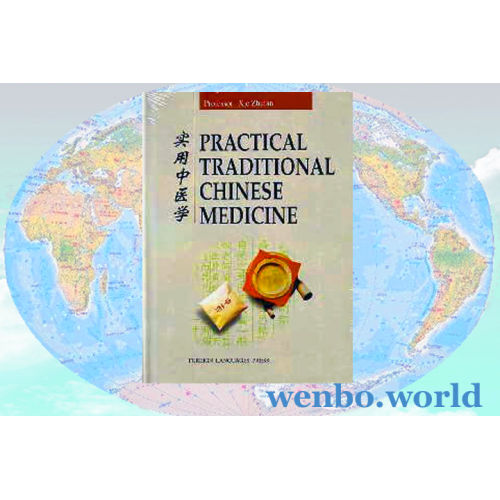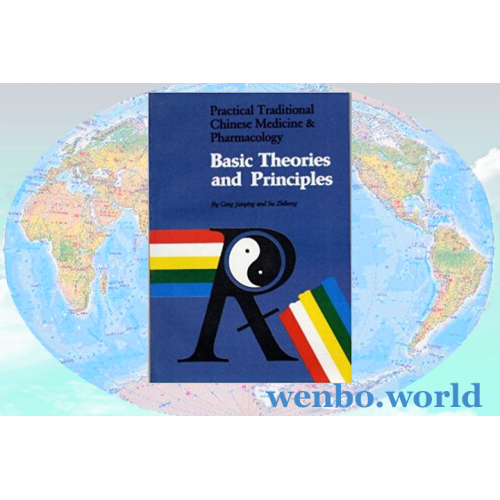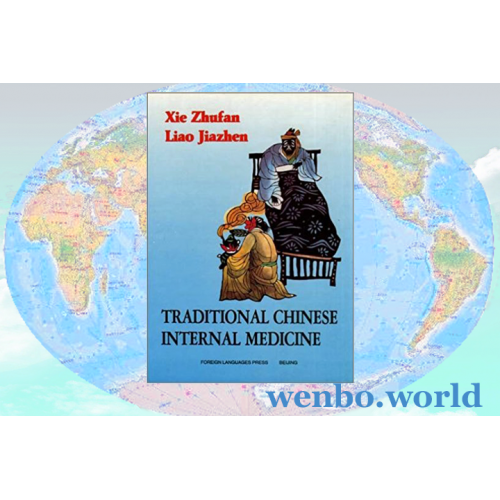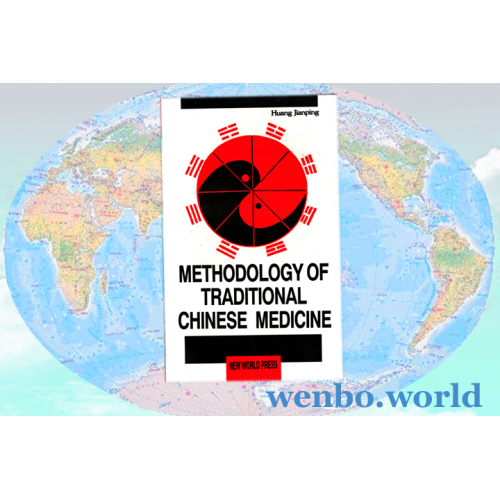Contemporary Introduction to Chinese Medicine in Comparison with Western Medicine
- Brand: Publishers of China
- Model: 2010hc
- SKU: b00comptcm
- ISBN: 9787119060484
- Reward Points: 250
- Availability: 2-3 Days
-
- Price in reward points: 4999
Elucidates the traditional Chinese medical theories with in-depth analysis of historical and cultural influences and comparison with related western medical theories at philosophical level, highlights the concepts of diagnostics and treatments of Chinese medicine that are both unique and complimentary to western medicine, with both similarities and differences stressed, to ensure readers to reach profound understandings of Chinese medicine.
Title: Contemporary Introduction to Chinese Medicine - In Comparison with Western Medicine
By Xie Zhufan
Published by Foreign Languages Press, Beijing, China, Jan 2010
Library binding book, dimensions 270 x 190 mm, 1 volume, 397 pages
ISBN: 9787119060484
The book elucidates the traditional Chinese medical theories with in-depth analysis of historical and cultural influences and comparison with related western medical theories at philosophical level, to ensure readers to reach profound understandings of Chinese medicine.
The book highlights the concepts of diagnostics and treatments of Chinese medicine that are both unique and complimentary to western medicine, with both similarities and differences stressed. Readers can distinguish clearly the methodologies of the two medical systems, dialectic Logic and holistic way of thinking versus formal Logic and analytic one.
The book faithfully lays out basic theories of traditional Chinese medicine, and diagnostic and therapeutic principles, with full attention on the treatment of diseases commonly seen in the West, such as allergic, arthritic and gastrointestinal disorders, hypertensive, coronary heart and diabetic diseases, metabolic syndromes and tumors, the Chinese medical treatment of which shows prominent beneficial effect in comparison with conventional western treatment with evidence of randomized controlled clinical trials. The therapies recommended are all of practical use. Readers can feel the great attractiveness and power of TCM and feel the urgency of further, exploration and integration with western medicine. Fluent in language and style, it is an extremely handy and practical tool, the best of its kind one can find nowadays.
The aim of this work is to provide Western practitioners a systematic approach to study, comprehend and practice traditional Chinese medicine.
About the Author:
Dr. Xie Zhufan is a professor of both Western and Chinese medicine, Director Emeritus of Institute of Integrated Chinese and Western Medicine at the First Medical School (also the First Hospital), Peking University. He has been engaged in clinical and experimental studies on the integration of the two systems of medicine for nearly fifty years and invited to give lectures in many countries on traditional Chinese medicine and integrated medicine. His works include Traditional Chinese Internal Medicine, Classified Dictionary of Traditional Chinese Medicine, Practical Traditional Chinese Medicine, etc. Traditional Chinese Internal Medicine was also translated into German and published in Germany. Practical Traditional Chinese Medicine was translated into Italian and Portuguese, and published in Italy and Brazil respectively.
Contents
Chapter I Cultural Backgrounds of Chinese Medicine
Ancient Chinese Philosophy
I. Confucianism
II. Daoism
Ancient Chinese Language
China's Scientific Tradition
Chapter II Basic Theories of Chinese Medicine
Theory of Essential Qi
I. Basic Concept of Qi
II. Components of Essential Qi
III. Comparison between Qi, Pneuma and Atom
Theory of Yin-Yang
I. Opposition of Yin and Yang
II. Interdependence of Yin and Yang
III. Inter-Consuming-Supporting Relationship of Yin and Yang (Waxing-Waning of Yin and Yang)
IV. Inter-transformation of Yin and Yang
V. Infinite Divisibility of Yin and Yang
Theory of Five Elements
I. Major Contents of Five-element Theory in Chinese Medicine
II. Comparison between Five-element Theory in Chinese Medicine and Four-element Theory in Greek Medicine
Theory of Visceral Manifestations
I. Anatomical, Physiological and Pathological Basis of Visceral Manifestations
II. Ancient "Black-box" Method
III. The Five Zang-Organs
IV. The Six Fu-Organs
V. The Extraordinary Organs
VI. Relations between Zang- and Zang-Organs
VII. Relations between Zang- and Fu-Organs
VIII. Relations of Zang-Organs with Other Tissues and Activities
IX. Ontology of Zang-Organs According to Modern Research
Theory of Meridians and Collaterals
I. Historical Development of the Concept of Meridian System
II. Evidence Indicating the Existence of Meridians in Modern Studies
III. Composition of the Meridian System
IV. Functions of the Meridians
Cause of Disease
I. Development of Etiology of Chinese Medicine
II. Causal Factors of External Contraction
TTI. Causal Factors of Internal Damage
IV. Pathogenesis in Chinese Medicine
Chapter III Diagnostics
Symptom, Disease and Syndrome Pattern
Four Examinations
I. Inspection
II. Listening and Smelling
III. Inquiry
IV. Palpation
Syndrome Differentiation (Pattern Identification)
I. Eight-Principle Syndrome Differentiation
II. Disease Cause Syndrome Differentiation
III. Qi-Blood and Body Fluid Syndrome Differentiation
IV. Visceral Syndrome Differentiation
V. Other Schemes of Syndrome Differentiation
Chapter IV Therapeutics
Principles of Treatment
I. Treating the Disease before it Arises
II. Treating the Root vs. Treating the Tip
III. Applying Treatment with Regard to Time, Place and Individual
IV. Consistent Treatment vs. Paradoxical Treatment
Basic Knowledge about Chinese Medicines
I. The Four Natures of Medicinals
II. The Five Tastes (Flavors) of Medicinals
III. Meridian Tropism of Medicinals
IV. Principles of Composing a Compound Formula
V. Medicinal Pairing
VI. Toxicity
VII. Processing of Medicinals
Methods of Treatment
I. Diaphoresis
II. Emesis
III. Purgation
IV. Harmonizing Method
V. Warming Method
VI. (Heat-)Clearing Method
VII. Dispersion (or Resolution)
VIII. Tonification
IX. Others
Chapter V Common Diseases
Allergies
Allergic Rhinitis
Urticaria
Bronchial Asthma
Cardiovascular Diseases
Essential Hypertension
Coronary Heart Disease
Chronic Gastro-lntestinal Diseases
Gastro-Esophageal Reflux and Esophagitis
Functional Dyspepsia
Peptic Ulcer Disease
Chronic Gastritis
Inflammatory Bowel Disease
Irritable Bowel Syndrome
Metabolic Disorders
Diabetes Mellitus
Metabolic Syndrome
Cancers
Arthritides
Rheumatoid Arthritis
Gouty Arthritis
Osteoarthritis
Index
Acknowledgement
Tags: Chinese medicine, Western medicine
Related Products
Synopsis of Prescriptions of the Golden Chamber
A classic clinical book of traditional Chinese medicine written by Zhang Zhongjing (150-219) is a compendium of his clinical experiences and prescriptions. T..
Fundamentals of Traditional Chinese Medicine
Interprets the basic concept and principles of TCM, such as yin-yang, the five elements, qi (vital energy), blood and body fluids, pathogenesis, pathology, the ..
Classified Dictionary of Traditional Chinese Medicine
Includes 7010 entries among which, 6630 are traditional Chinese medical terms and 380 are commonly used citations and maxims, in the order of traditional Chines..
Practical Traditional Chinese Medicine
This book meets the needs of Western doctors who do not have knowledge of Chinese but wish to study Chinese medicine. It covers basic theories and major therape..
Practical TCM & Pharmacology: Basic Theories and Principles
addresses the concepts and interrelationship as well as clinical application of the basic philosophical elements of traditional Chinese medicine such as the yin..
Traditional Chinese Internal Medicine
introduces the basic ideas such as covered include yin and yang, zang and fu organs and pathogeny and pathology, general principles for making diagnoses and adm..
Practical TCM & Pharmacology: Clinical Experiences
brings together for the first time the clinical experiences of ancient practitioners as well as those of the finest doctors practicing throughout China today ac..
Methodology of Traditional Chinese Medicine
Traditional Chinese medicine embodies rich dialectical thought, such as that of the holistic connections and the unity of yin and yang. It deals with many facet..

